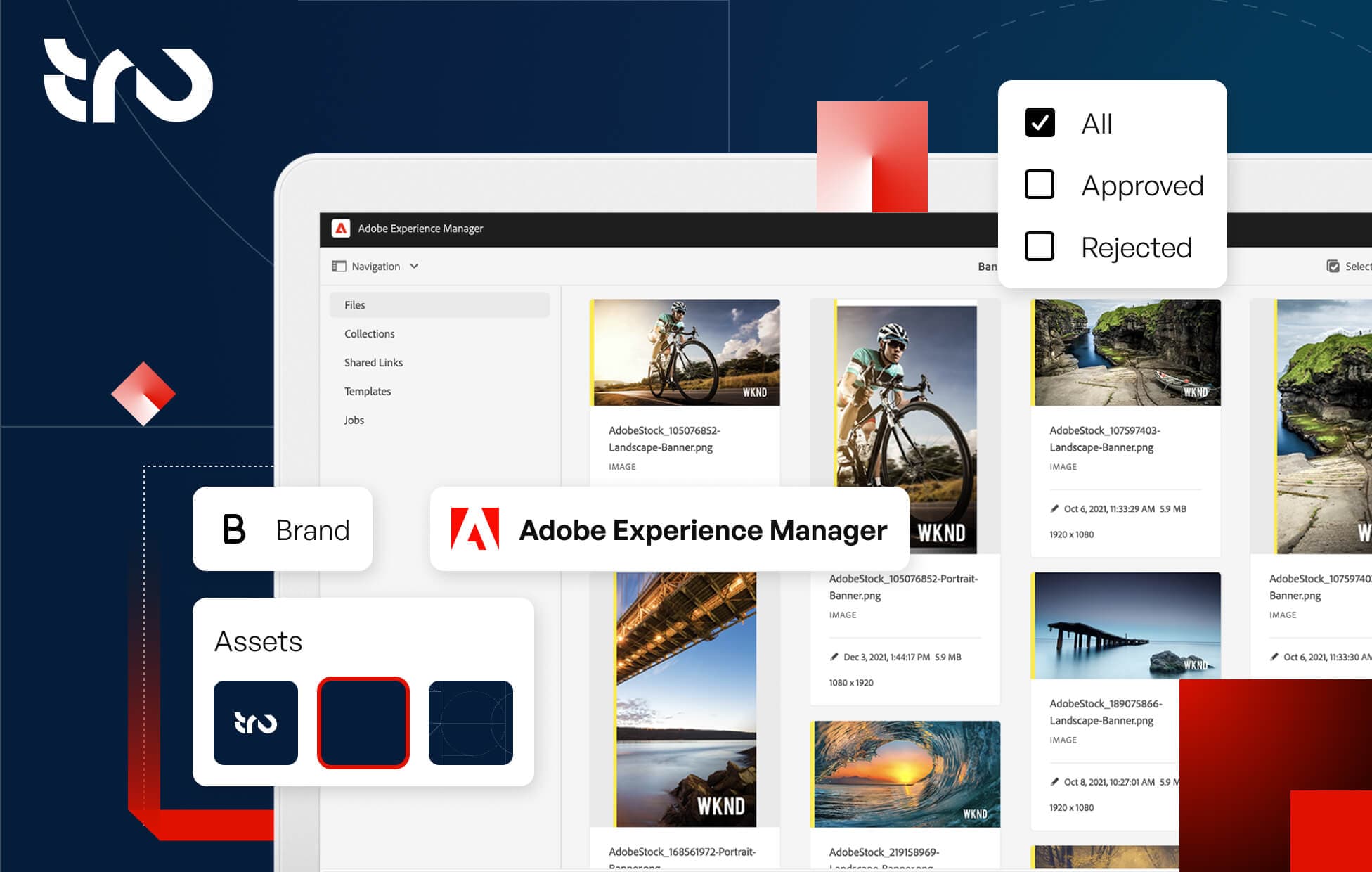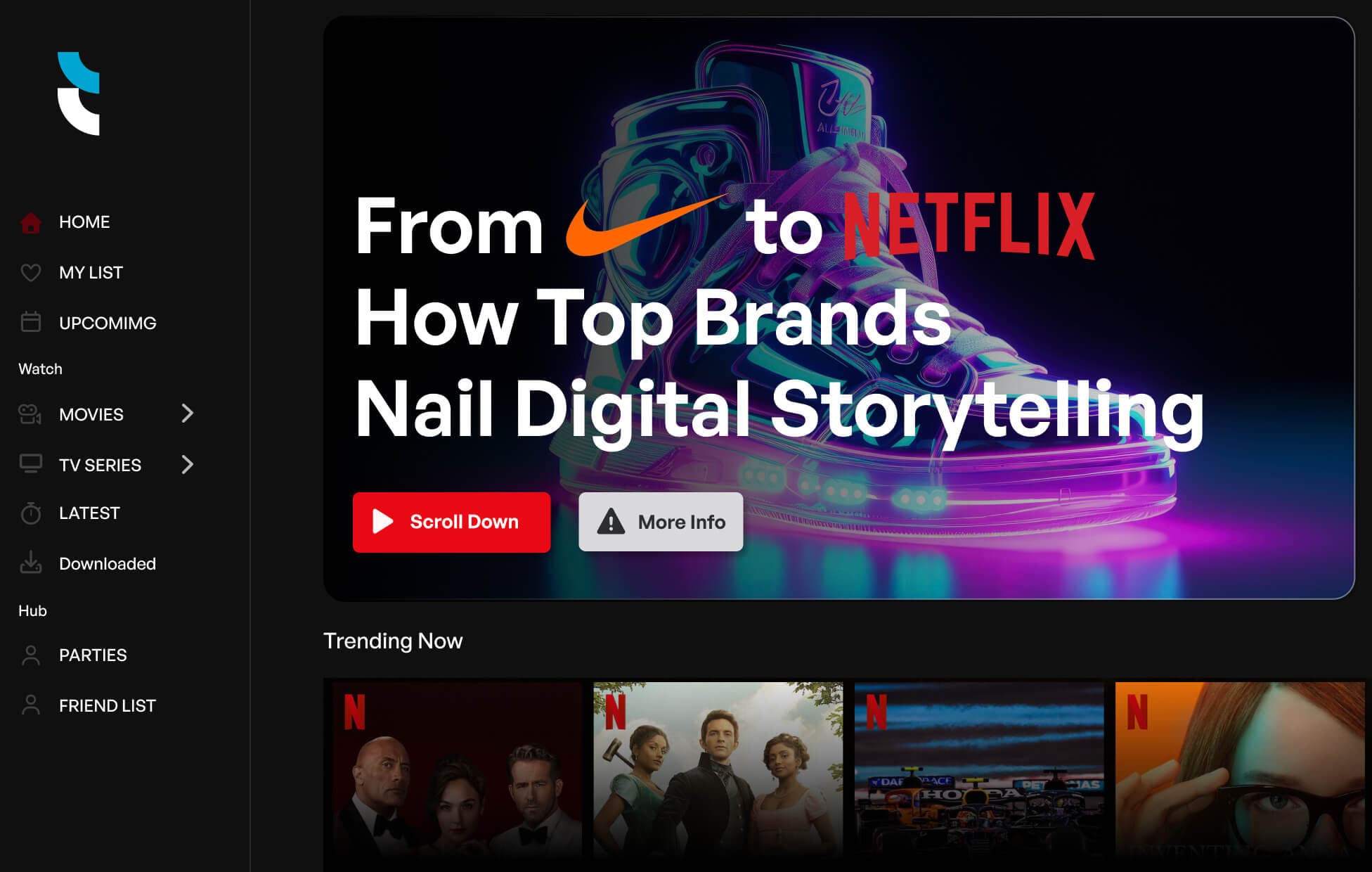Think for a minute: is price the only factor in customer buying decisions today?
Definitely not.
Winning retailers know the battlefield is about more than price. Success now depends on delivering consistent, personalized, and authentic experiences across every customer channel. Adobe Experience Manager (AEM) is the content management system that makes omnipresence and operational discipline possible.
This blog explores AEM and how it helps retailers cut wasted effort between content, commerce, and analytics so every campaign proves its value rather than adding noise.
What is Adobe Experience Manager CMS?
Adobe Experience Manager (AEM) CMS is a powerful platform that helps brands create, manage, and deliver digital experiences across websites, apps, and even in-store screens. More than a traditional CMS, it combines content management, asset management, personalization, and marketing tools in one place.
For retailers, AEM becomes the hub that connects marketing, commerce, and customer insights. It simplifies managing multiple channels, markets, and journeys at once.
Features of Adobe Experience Manager CMS
AEM CMS stands out for the way it ensures consistent execution with these capabilities:
Content Authoring & Management: Drag-and-drop tools, templates, and reusable components simplify publishing and keep campaigns consistent.
Digital Asset Management (DAM): Centralized storage with tagging, approvals, and localization streamlines workflows and reduces errors.
Personalization Tools: Integrated with analytics and targeting, AEM delivers tailored content to segments without multiplying creative tasks.
Omnichannel Delivery: Publish once and deliver across web, mobile, email, and in-store from a single, centralized content hub.
Governance & Security: Workflows, permissions, and audit trails safeguard compliance and brand standards.
Related insight > AEM Migration: How Retail Chains Can Centralize Content and Scale Faster
With these core features in place, the real advantage of AEM CMS comes from how retailers put them into action. Six proven ways to elevate online marketing with AEM are:
1. Streamline Content Operations for Speed
AEM brings templates, workflows, and approvals together in one place. Teams spend less time repeating tasks and more time getting campaigns out on schedule.
Action: Standardize reusable components. Assign clear ownership across departments. Work in sprint cycles aligned with your retail calendar.
2. Personalize Without Multiplying Creative Overhead
AEM’s content fragments and rules help tailor experiences without generating endless versions. Personalization becomes structured, testable, and easy to manage.
Action: Map three priority customer journeys. Test one clear hypothesis per path. Refine based on real results.
3. Link Marketing Directly to Commerce Signals
Connecting AEM to product catalogs and live inventory ensures content always reflects availability and pricing. Customers make confident decisions, and campaigns deliver quantifiable results faster.
Action: Tie high-value SKUs (product codes) to editorial content. Monitor add-to-cart rates and conversions over 30 days.
4. Automate Asset Workflows for Consistency
AEM’s DAM handles approvals, tagging, and localization automatically. Teams spend less time managing assets and more time enhancing campaigns.
Action: Enforce strict tagging rules. Route approved assets automatically to regional teams.
5. Measure Performance With Precision
Every campaign needs proof. Linking AEM with analytics gives executives clear feedback on what sells and what stalls, helping teams focus on what works.
Action: Set three outcome-based KPIs. Run quick experiments to confirm winners and retire weak ideas early.
6. Strengthen Governance and Control Releases
Cloud deployments and feature controls reduce risk. Governance ensures every asset meets brand standards while expanding content output without compromise.
Action: Use staged rollouts with rollback options. Conduct quarterly content audits to maintain quality.
Build interactive omnichannel customer journeys with Tru’s Adobe Experience Cloud Services
Request Your AEM Strategy for Retail Success.
Contact UsGlobal Retailers Boosting CX and Revenue with AEM
Top retailers setting new benchmarks in experience and efficiency with AEM include:
Best Buy
Centralized content and streamlined product launches with AEM cut time-to-market by 83%. This enables faster campaigns and more consistent multichannel customer experiences for the electronics retailer.
HanesBrands
AEM Sites and Adobe personalization tools delivered fast, tailored shopping journeys. Targeted email campaigns grew revenue by 57%, and retargeted customers became 3x more likely to purchase.
Signify (Philips Hue)
Modular, personalized AEM websites (integrated with Adobe’s commerce and data platforms) improved page load times by 50%. Net merchandise value jumped 55%, and average order value increased by 20%.
Breville
Migrating to AEM Cloud Service cut website launch times in half (2× faster). Sites launched across 22 countries, and 100+ microsites were revamped in just months, boosting global reach efficiently.
Source: Adobe For Business | Case Studies
Tru equips retailers with systems that connect content, commerce, and results reliably. Check out our E-commerce Services to power faster, smarter retail growth.
Conclusion
Adobe Experience Manager CMS gives retailers the ability to test, refine, and deliver content that is tied to commerce and validated with results. By treating AEM as an operational system rather than a publishing tool, retail leaders shorten the path from idea to verified revenue.
At Tru, we design, deploy, and deliver marketing systems that help retailers cut waste, sharpen execution, and validate results with confidence.
Frequently Asked Questions about AEM CMS
Adobe Experience Manager CMS is used to create, manage, and deliver consistent content across websites, apps, and other digital channels.
Core features of AEM include content authoring, DAM, personalization, omnichannel delivery, and strong governance.
No. AEM benefits mid-size businesses with complex needs as well. However, it is primarily designed for enterprise retailers managing multiple channels.
AEM enables targeted experiences by combining reusable content fragments with customer data, reducing creative duplication.
Yes. AEM connects with Adobe Analytics and third-party platforms to provide precise performance measurement.
Yes. By automating workflows and standardizing assets, AEM reduces repeated production work and accelerates campaign timelines.



